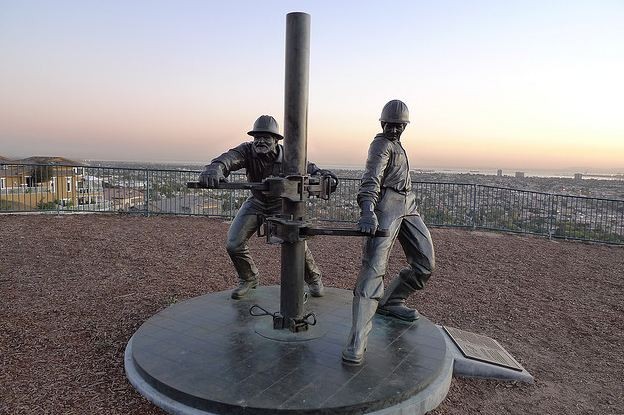Signal Hill Oil Worker Statue
Introduction
Text-to-speech Audio
This monument was dedicated on May 3, 1952, and honors the oil workers who helped build the economy of Signal Hill. The town is unique as the only city in America surrounded by another city (Long Beach), and is best known for the substantial oil fields that were discovered in 1921. Soon after the discovery of oil numerous rigs were built on the hill and as a result, it became known as "porcupine hill." Oil continues to be pumped but today the hill is primarily residential, as it was before oil was discovered. A park featuring a commemorative sculpture and community center helps preserve the hill's oil history.
Images
This photo shows a sculpture created by Cindy Jackson titled “Tribute to the Roughnecks” depicting two men bringing up petroleum following the 1921 oilfield discovery.

Backstory and Context
Text-to-speech Audio
In 1900, the state of California was producing four million barrels of oil. By 1910, that had increased to 77 million barrels. Even though production had increased, the oil fields were showing signs of depletion until three major fields were discovered, one in Huntington Beach (1920), one in Santa Fe Springs (1921), and the biggest of them all, in Signal Hill (1921).
Within one year of the discovery, 108 wells had been built, and the total output was 14,000 barrels a day. At the end of 1923, there were 300 wells, and output reached nearly 260,000 barrels per day. This amounted to a quarter of the world's oil production.
Sources
"Signal Hill Oil Boom." American Oil & Gas Historical Society. Accessed May 13, 2016. http://aoghs.org/petroleum-pioneers/signal-hill-oil.
